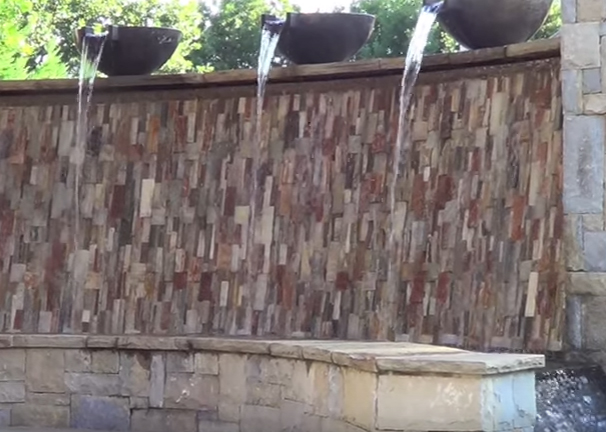Fountains
In recent years, most watershapers have had to speak up in defense of their projects when prospective clients start asking questions about water use and how a pool or pond or fountain can possibly represent a sustainable use of a precious natural resource. These questions even come from those who are fully committed to making water a part of a business or civic setting or a feature in a home environment: They're looking for ways of
Water bowls emerged not long ago as a key element in the Watershaping Industry's ongoing campaign to bring dimension, sound and vitality to residential backyards and commercial settings. They go a long way toward masking traffic noise, which is cool, but even in a space that's perfectly quiet, they offer up soothing sounds while bringing a sense of variety and visual stimulation to projects of just about any size or extent. As with the many
Three words come to mind when I consider what's been happening with the Main Fountain Garden at Longwood Gardens for the last two-and-a-half years: ambitious, audacious and amazing. The people behind the project, from Longwood's management team to all of the outside players who signed on to get the work done, were supremely ambitious in deciding to reconstruct a historic national treasure - first commissioned in 1931 - and bring it abruptly up to 21st-century standards for performance, automation and serviceability. They were audacious to the extent that they decided that all of this should happen in plain view, with no visual obstructions to hide what was going on from the public at large - no construction pen, no yellow tape, no barriers of any kind to keep the observers who crowd the fountain's famed Conservatory Terrace from seeing exactly what was happening with their beloved water display. But so amazing! Although it had been in decline
As purveyors of fountains and other forms of decorative or recreational water, watershapers are faced these days by an immediate challenge: What we do is generally classified as "unsustainable" by an environmentally conscious public because they erroneously assume poor performance when it comes to the way we approach water consumption, use of space and energy efficiency. On the surface, these are serious knocks on
As watershapers, we're comfortable using our chosen medium as a place-maker, an entertainer and a resource for recreation. In doing so, we take advantage of the fact that water is a unique, extremely versatile substance that can be manipulated in innumerable ways. We also accommodate the thought that, supreme among design media, water has a pronounced and often profound effect on people who
In concept, water walls are pretty straightforward: You pump a bit of water to the top of a structure and set up a weir or spillways or a system of emitters to release water so that it moves down the face of the wall the way you want it to flow. In actuality, however, water walls are much more complicated than that. In fact, there are lots of things that
Projects in significant public spaces are rewarding on many levels, but they also carry their fair share of challenges, mostly in the forms of scheduling, coordination and communication. For us at Crystal Fountains (Concord, Ontario, Canada), these hurdles are beyond familiar: For decades, we've been a go-to working partner for fountain and interactive waterfeature projects around the world, from the Crown Fountain
When it comes to ostentatious and even audacious aquatic displays, there's no doubt that the Middle East now boasts some of the world's most incredible watershapes. Even a quick survey reveals a tremendous range of architectural and hydrological marvels in which technology is paired with grandeur to stunning effect. Several instances of this exuberance appear on
This is one of those cases where, from a design perspective, I said just about everything I wanted to say about rain-curtain effects in the video linked below. They look great, they sound even better and my clients love them. So what else is there to consider? Well,
Yards Park is a wonderful open space in the Capitol Riverfront neighborhood of Washington, D.C. One of its main attractions is in the middle block of the park, where you'll find a grand watershape with a footprint that covers an area spanning 20 by 135 feet. At one end, there's a fountain/waterfeature that immediately catches the eye. But the big draw






















